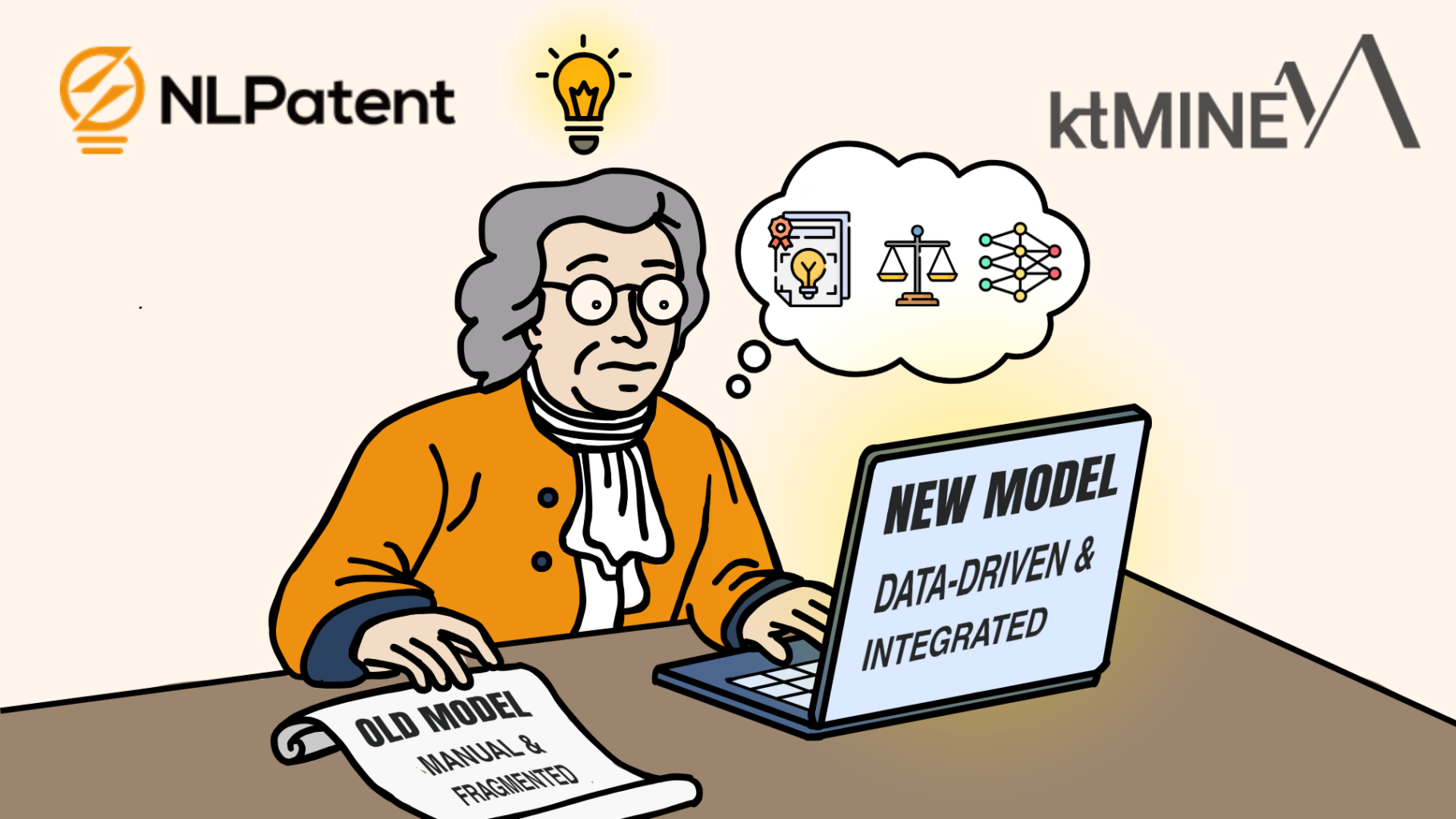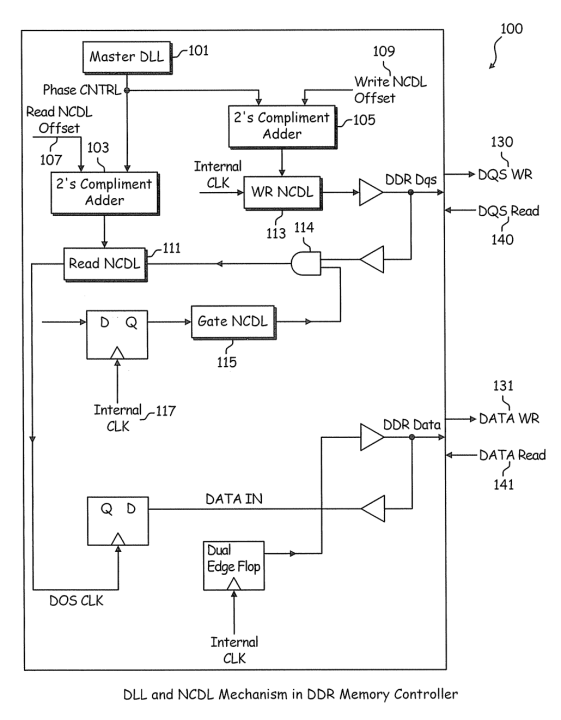For years, a company’s patent portfolio was often a proxy for its market strength, leading them to accumulate as many patents as possible. Evaluating the true value and impact of these assets was a cumbersome and often inaccurate process, with questionable returns for the cost.
In this article, however, NLPatent CEO Stephanie Curcio and ktMINE CEO Michael Taylor team up to explore an accelerating shift away from simply amassing patents to prioritizing quality and strategic potential, propelled by the continued rise of AI and sophisticated data analytics. Tools that were once cutting-edge experiments are now essential for navigating the complexities of modern IP strategy, rapidly changing how both corporations and their legal counsel operate.
The Patent Arms Race is Over
For decades, patent strategy was primarily a numbers game – more patents meant stronger market positioning. Assessing a patent’s strength or value was often one dimensional, or required an incredibly manual, fragmented, and time-consuming process. Doing it well was expensive; doing it poorly resulted in “pie in the sky” estimations – high level guesses that lacked depth and were rarely accurate. In most cases, the juice just wasn’t worth the squeeze.
The conventional approach was to file as many patent applications as possible to increase your odds that something in your portfolio turned out to be valuable. But that mindset is shifting. Companies like IBM have stopped filing patents for the sake of filing patents, prioritizing quality (or as they call it, “focus”) over quantity. As shown below, IBM’s new filed Patent Applications have declined from 2019 to 2023 (data from applications filed in 2024 and 2025 has been excluded due to incompleteness because many applications from those years have yet to publish):

IBM is a great example, but they’re not alone. We’re entering a new area of IP strategy, driven by AI and data.
AI has unlocked the ability to evaluate, analyze, and act on IP strategy at scale, something that was previously impossible due to the sheer volume of data and the limitations of manual processes. It’s no longer controversial to say that AI adoption is non-optional – it is essential, both for corporations and the law firms that serve them. Corporations are using AI to set, maintain, and monitor strategy in-house, while routine tasks once handled by outside counsel are increasingly managed internally. Due to the combined challenges of billable-hour pushback and the shift to fixed-fee billing, law firms are feeling pressure not only to increase efficiencies but also to provide more value than merely filing applications.
The model is changing fast.
The writing’s on the wall: organizations that are quick to embrace this shift towards an AI-driven future will gain a competitive edge, while those clinging to outdated approaches will be left behind.
The Challenge of Data Fragmentation
If AI is the engine of modern IP strategy, then data is the fuel. But not just any data will do – this engine requires high-octane jet fuel: rich, structured and contextual data. While AI holds enormous promise in IP to surface meaningful insights, identify patterns, simplify routine tasks, and streamline workflows, the results are only as good as the inputs. You’ve heard the phrase: “garbage in, garbage out”? It perfectly applies here. Shaping AI on top of shallow, fragmented, outdated, or one-dimensional datasets won’t deliver real strategic value, full stop. And it certainly won’t meet the expectations of more demanding IP stakeholders.
Law firms, in particular, face a dual challenge: clients expect faster, more strategic guidance, while cost pressures and fixed-fee arrangements leave little room for inefficiency. If the AI tools they rely on aren’t built on complete, well-structured datasets, they won’t produce actionable insights, and the time saved on automation will be lost trying to make sense of incomplete or inaccurate outputs. This creates a disconnect between expectations and reality, eroding trust in both the tools and the service providers who use them.
And the gap is only getting wider.
As AI technology advances at an unprecedented pace, so too have AI-driven platforms. For example, not long ago, it was sufficient for semantic-based systems to derive meaning from a patent’s title, abstract, and claims. Today, however, the richness of context from the full specification is table stakes – and the future will demand even more. Tomorrow’s expectations will extend even further, capturing everything from prosecution histories to post-grant developments, licensing data, and even forward-looking indicators like R&D signals and adjacent tech trends.
Patent data alone, while rich, isn’t enough. To deliver true strategic value (whether internally or to clients) AI systems must be fed with diverse, high-quality, and interoperable datasets. Without them, even the most advanced algorithms will return shallow insights, misinformation, and missed opportunities. True AI-enabled IP strategy demands more.
Beyond the Four Corners of a Patent
Historically, IP professionals have had to piece together fragmented datasets across multiple sources. One product for search, another for litigation insights, another for licensing or market intelligence, and so on. AI-based solutions exist, but they too have the same problem sourcing and normalizing inconsistent data. Patent records vary wildly across different jurisdictions and are published in different formats, with varying levels of structure and completeness. Zooming out, there is so much more to IP strategy than patent documents themselves. Indeed, patent documents are only one piece of the puzzle. A complete IP strategy requires looking beyond the four corners of a patent document – it requires a synthesis of legal, commercial, and technical context.
Who’s citing a patent? Are they competitors, potential partners, or licensees? Is the patent being enforced? Is it being licensed? How is the surrounding technology space evolving? These are the kinds of questions that shape real-world patent strategy, and they cannot be answered with legacy solutions alone.
Organizations that embrace AI-powered contextualization – integrating licensing, litigation, and competitive intelligence alongside traditional patent data – can see the full landscape. The big picture. They move faster, make smarter decisions, and reduce risk.
This is where collaboration becomes essential. Modern data providers like ktMINE remove the heavy lift of sourcing, cleaning, and normalizing critical datasets, allowing AI-native platforms like NLPatent to focus on what they do best: building intelligent workflows that produce real insights. With high-quality, structured data from day one, development cycles shrink, the user experience improves, and the time-to-impact for IP strategy shortens significantly.
IP Data as a Pipeline, Not a Patchwork
As patent strategy becomes more dynamic, the infrastructure that supports it must evolve. The old model, stitching together insights from siloed tools and manually maintained datasets, isn’t built for speed or scale. It’s reactive, fragile, and ultimately unsustainable in a world where decisions need to be data-driven and real-time.
A modern alternative is to treat IP data like a pipeline: clean, structured, and continuously updated. Making it ready to power AI workflows without requiring endless manual prep.
A well-designed pipeline allows software vendors to “snap in” additional datasets enabling patent family trees, up-to-date examiner citations, licensing data, or litigation records without rebuilding their entire infrastructure. This kind of modularity makes it possible to adapt quickly to shifting priorities, emerging risks, or new business goals, keeping up with demand without losing momentum.
The result is a more resilient, modern, and complete foundation for IP strategy that empowers software providers to deliver tools that give IP professionals the full context they need to make faster, smarter, and more strategic decisions.
The Future is AI-Driven
The demands on IP professionals are evolving, and accelerating. IP owners expect more insights, delivered faster. The days of static reports and manual patent searches are fading. The future lies in automated, AI-powered workflows that deliver real-time, high-confidence recommendations on patentability, risk, enforcement, and valuation – while also surfacing untapped opportunities for licensing, acquisition, divestiture, or strategic assertion.
This isn’t just about speed or scale. It’s about clarity – seeing the forest for the trees. AI is incredibly well suited to surface signals that matter from a sea of noise, helping innovators, rights holders, and service providers act with confidence and uncover insights, trends and patterns at scale.
We are witnessing a fundamental shift in how IP data is used, how AI is integrated into decision-making, and how organizations derive value from their patents. Quality data powers quality AI, and together, they are reshaping the foundation of IP intelligence, strategy, and execution.
The organizations that recognize this shift and invest in platforms that unite structured data with intelligent automation will define the next era of innovation. Those that don’t, frankly will struggle to survive.
Welcome to the Enlightenment Era of IP strategy.
About NLPatent
NLPatent’s AI-first patent research and intelligence platform transforms how IP professionals access, analyze, and act on patent data. Built on proprietary large language models trained on the language of patents, NLPatent delivers fast, context-rich insights for patentability, risk, enforcement, and strategy – empowering users to work smarter and make more informed IP decisions. Visit the NLPatent site to learn more.
About ktMINE
ktMINE’s Intellectual Property (IP) Data Pipeline takes the pressure of sourcing and cleansing raw data off our customers, enabling them to prioritize value-driving development. ktMINE delivers comprehensive IP data and metrics, including global patents and trademarks, royalty rates and agreements, and adjacent IP data. This data empowers customers to build the next generation of AI products and tools to effectively drive IP-based innovation.





